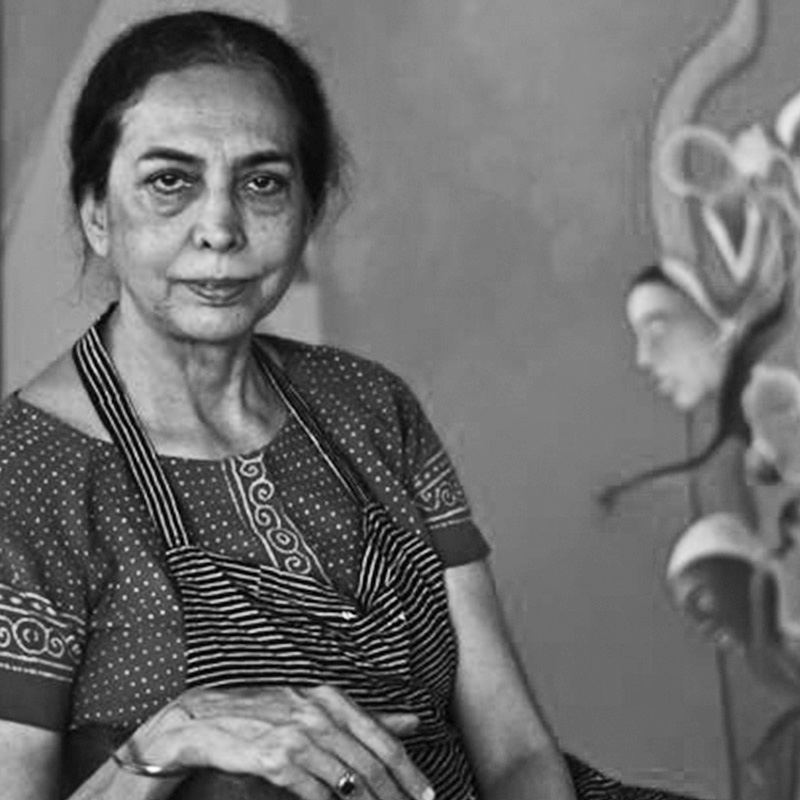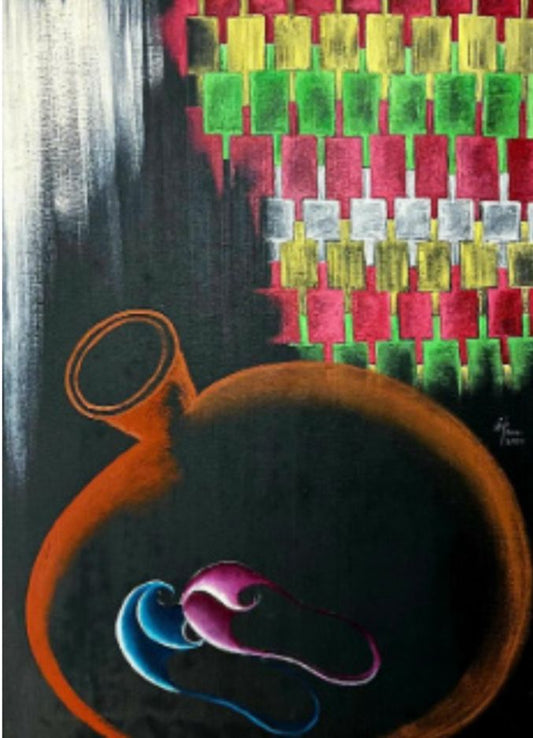
ARPANA CAUR
A self-taught artist whose work reflects a deep engagement with the human condition, the environment, and contemporary social realities. Initially trained in literature, Caur’s artistic vision is enriched by her literary background, particularly Punjabi literature and philosophy, which introduced her to themes of melancholy, mysticism, and devotion. Writers such as Shiv Batalvi, Amrita Pritam, and Krishna Sobti frequently visited her home, fostering an early intellectual and creative environment that would deeply influence her work. Her artistic perspective also draws inspiration from the Pahari miniature tradition, evident in her nuanced manipulation of pictorial space and delicate attention to detail.
Caur’s oeuvre can be seen as a continuation of the line begun by Amrita Sher-Gil, yet it asserts a distinctly contemporary feminine and feminist perspective. Portraits of women, often placed in urban or everyday settings, form a central motif, emphasizing strength and resilience over eroticism. As art historian Gayatri Sinha notes, “There is no hint of an expressive sexuality; woman and nature are both symbiotically tied in a circle of perceived threat and uncertain renewal.” Through her work, Caur addresses fundamental concerns such as time, life and death, environmental fragility, and the violence of human action, referencing historical tragedies like the Partition of India, Hiroshima, the 1984 Sikh massacre, and local disasters such as the Chasnala mining tragedy.
Recurring motifs, particularly clothing, function both symbolically and politically. Women engaged in everyday acts, sewing, daydreaming, typing, are recontextualized outdoors, their actions transformed into commentary on broader social and political productivity. Caur’s work navigates the tension between tradition and contemporary critique, presenting women as agents of both continuity and change. Her practice extends beyond the canvas, with large non-commercial murals in Delhi, Bangalore, and Hamburg addressing environmental and social themes. Today, Caur’s works are held in major institutions worldwide, including the Museums of Modern Art in New Delhi, Mumbai, Chandigarh, Düsseldorf, Singapore, Bradford, Stockholm, Hiroshima, and Los Angeles; the Victoria and Albert Museum in London; the Asian Art Museum in San Francisco; and the Peabody Essex Museum in Salem. Caur’s art resonates through its synthesis of literary sensibility, social consciousness, and visual innovation. By focusing on the quotidian, the symbolic, and the environmental, she transforms everyday narratives into compelling visual meditations that explore resilience, memory, and the enduring vitality of women within society.

